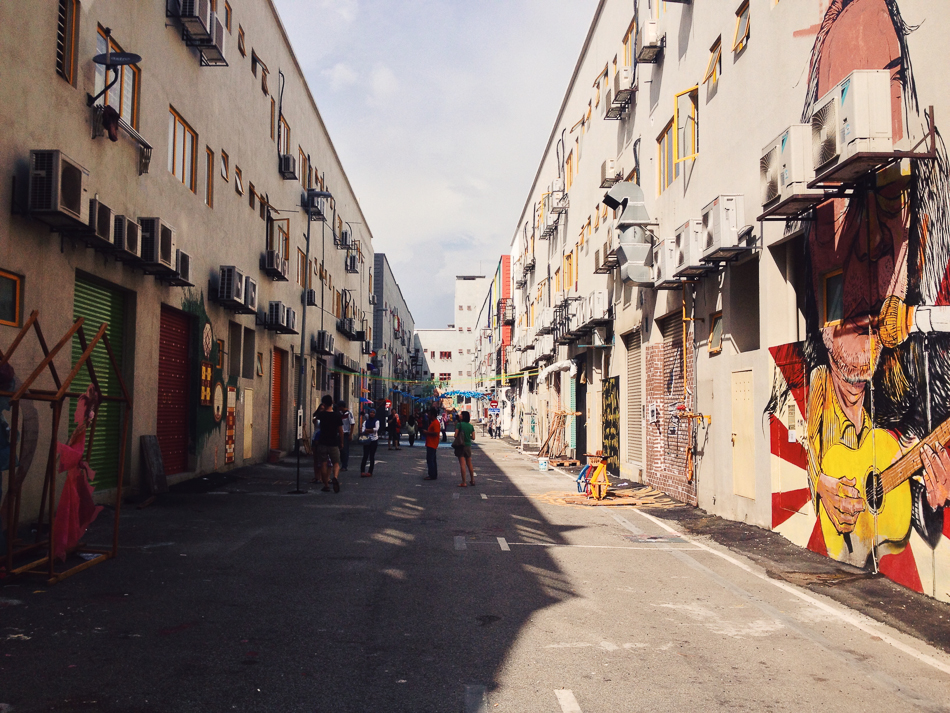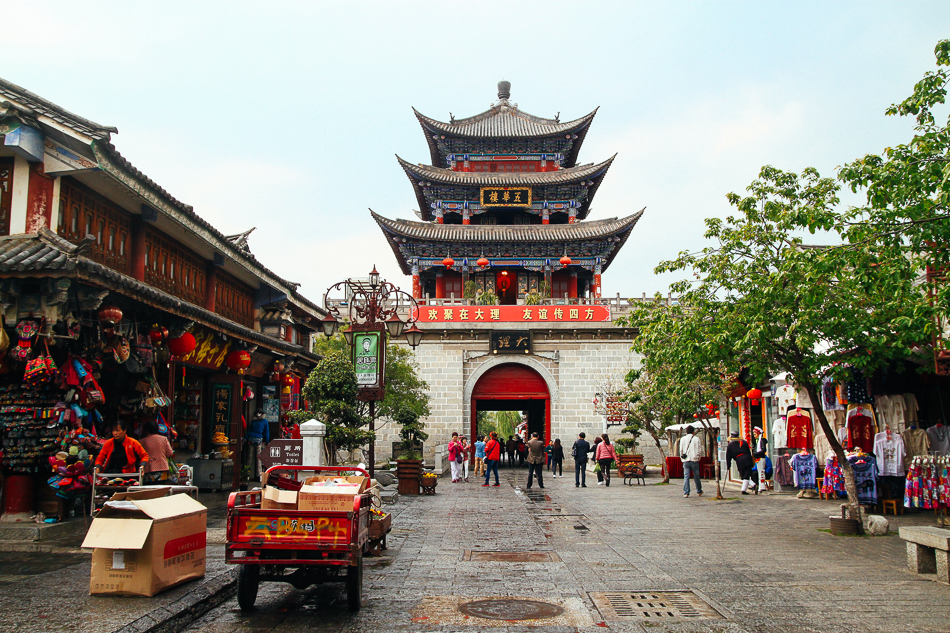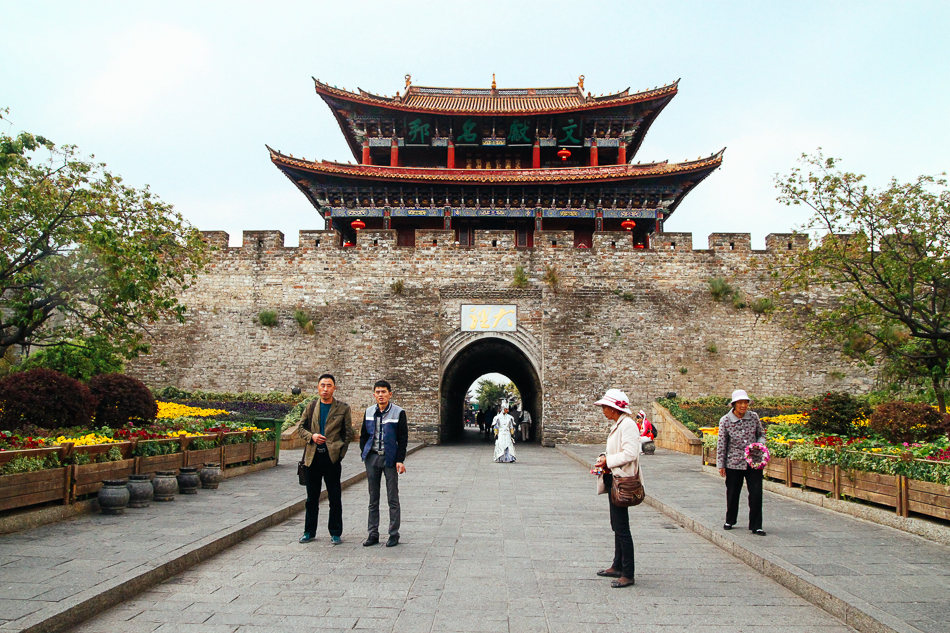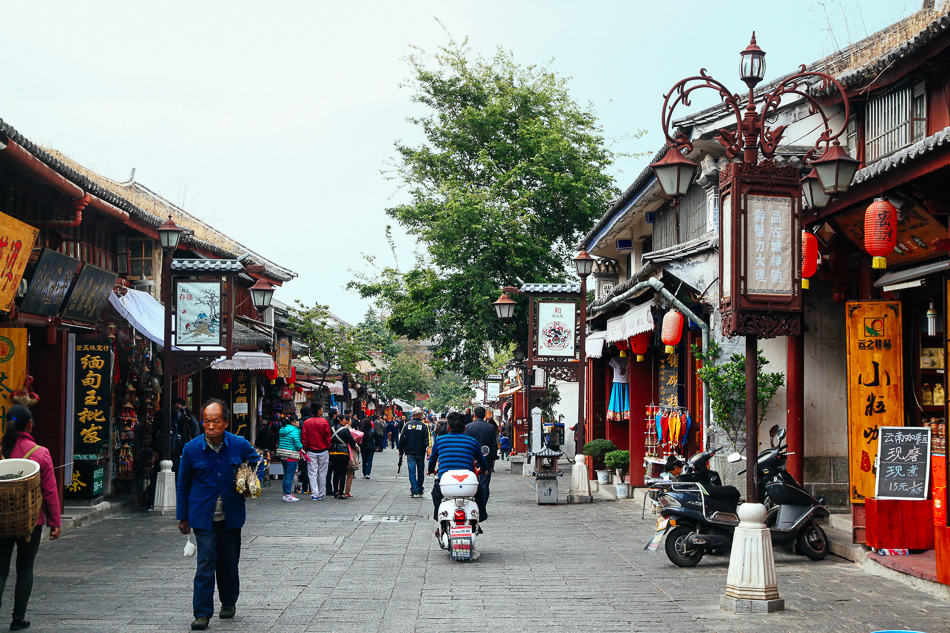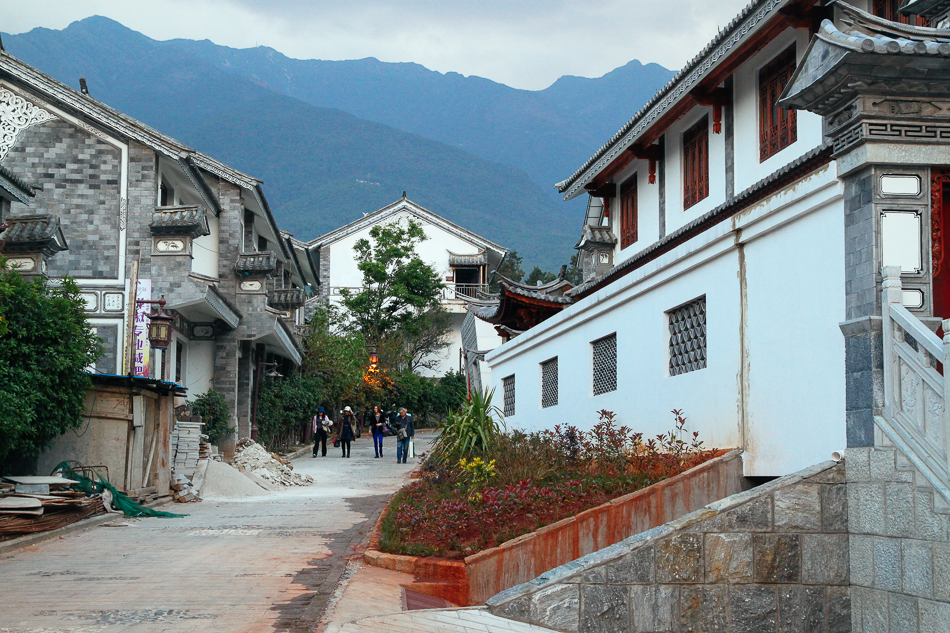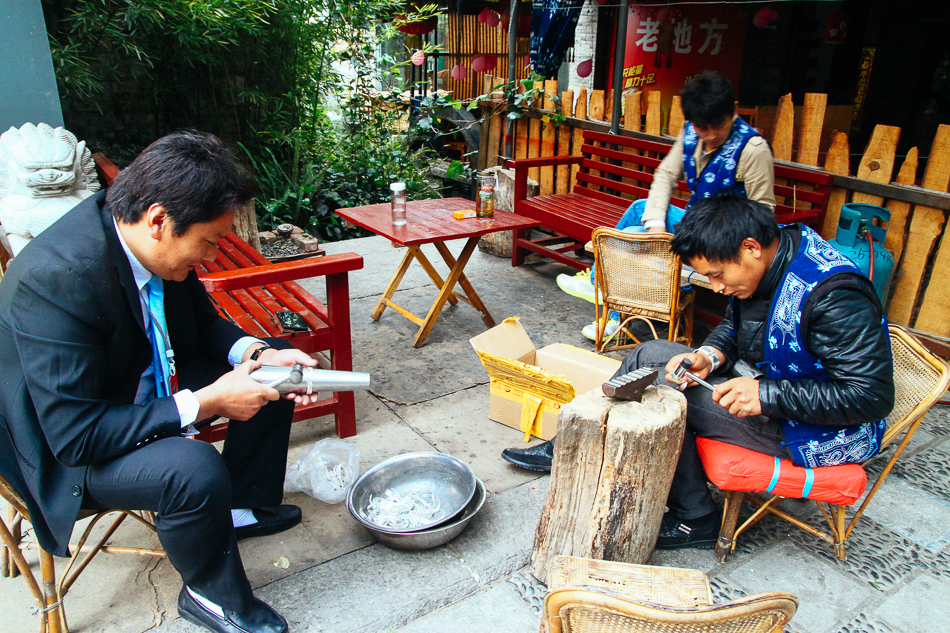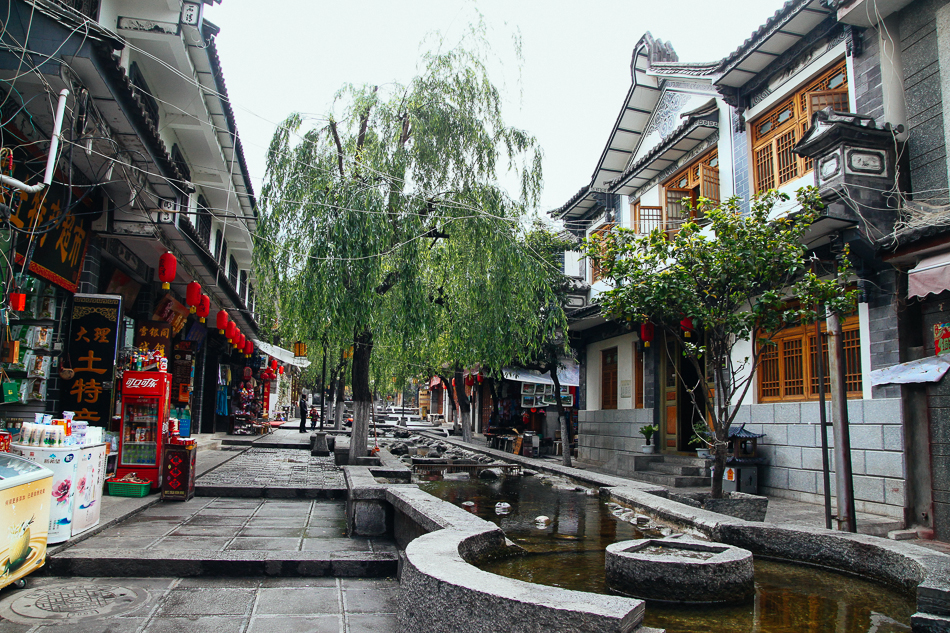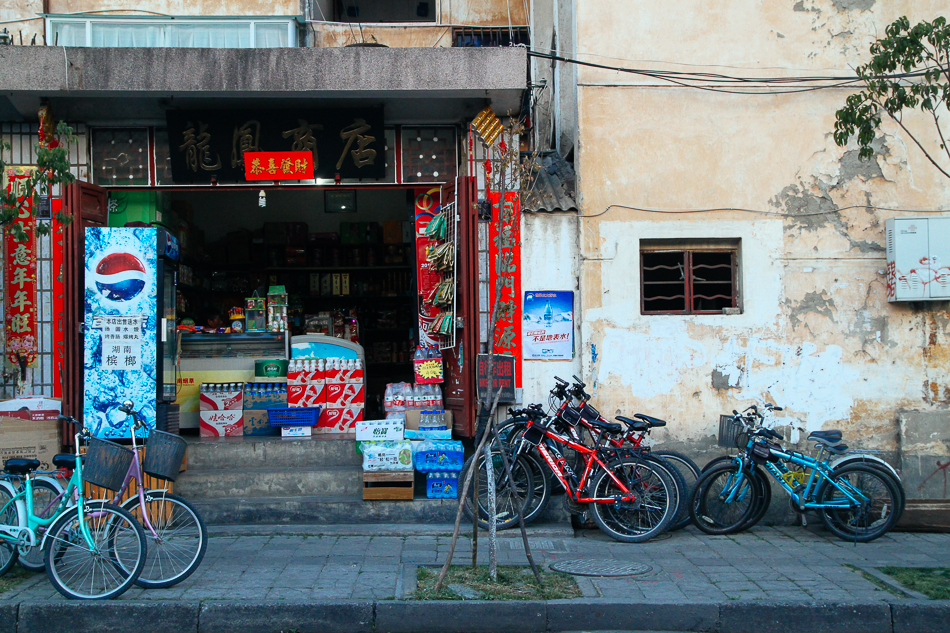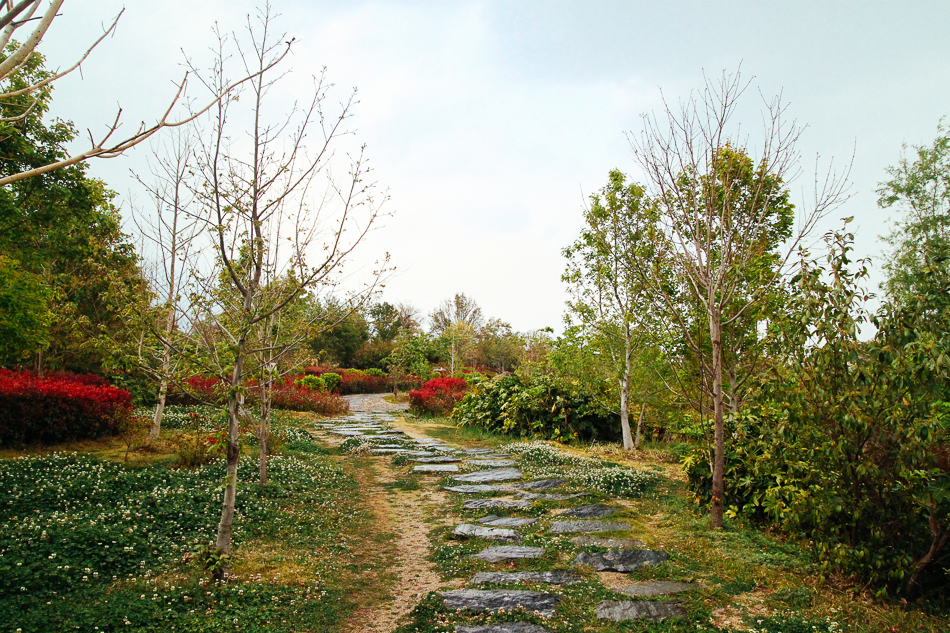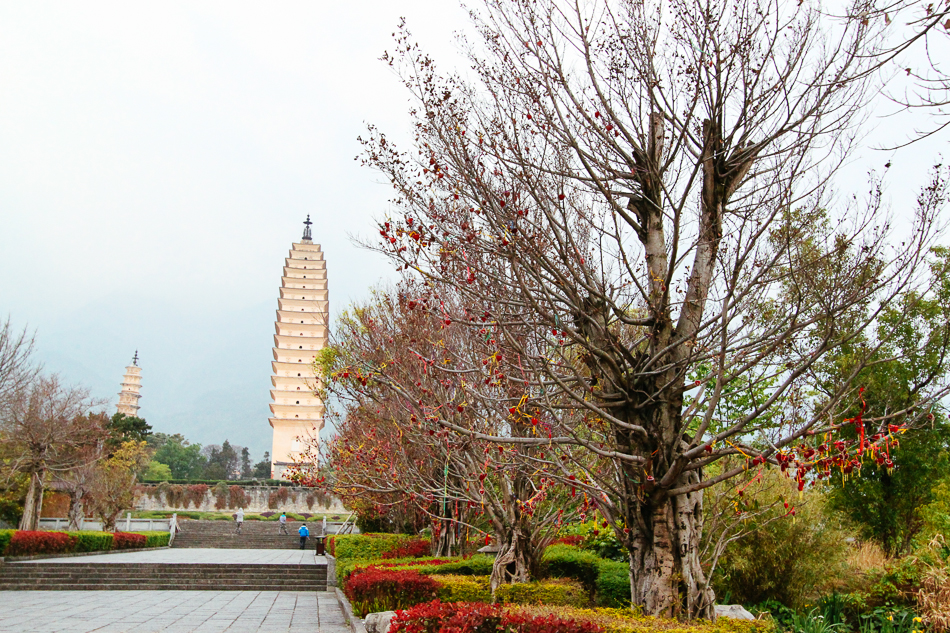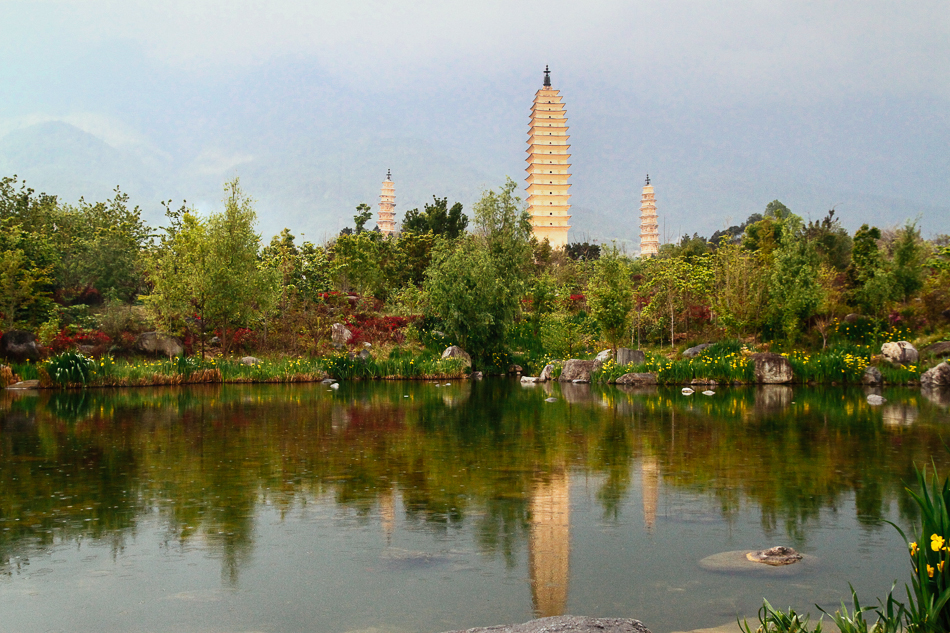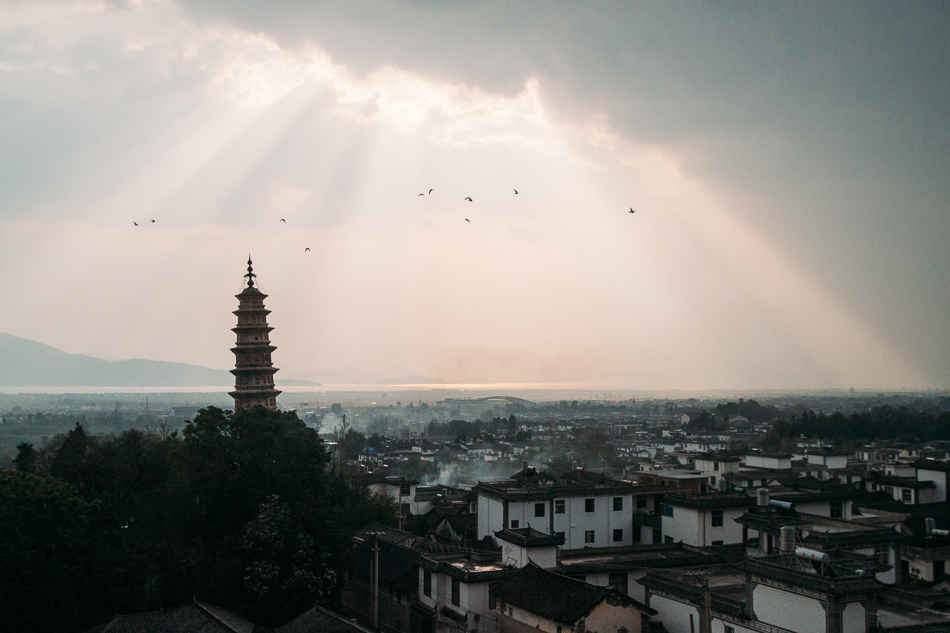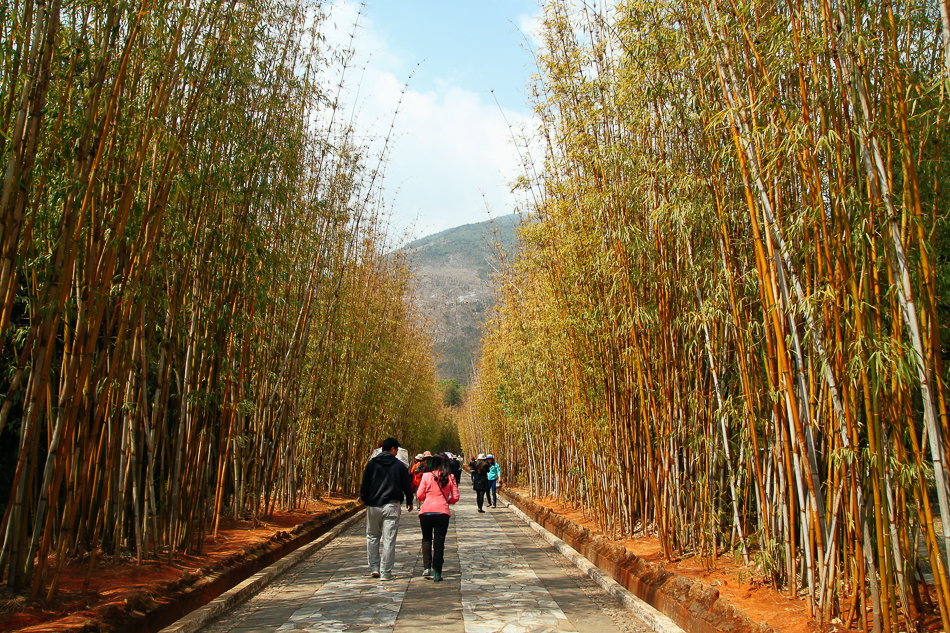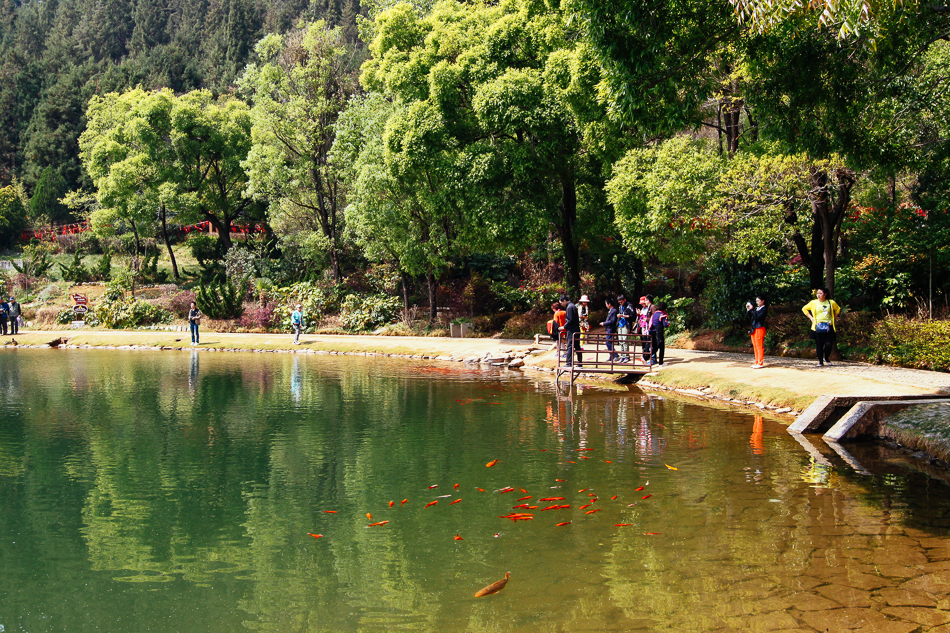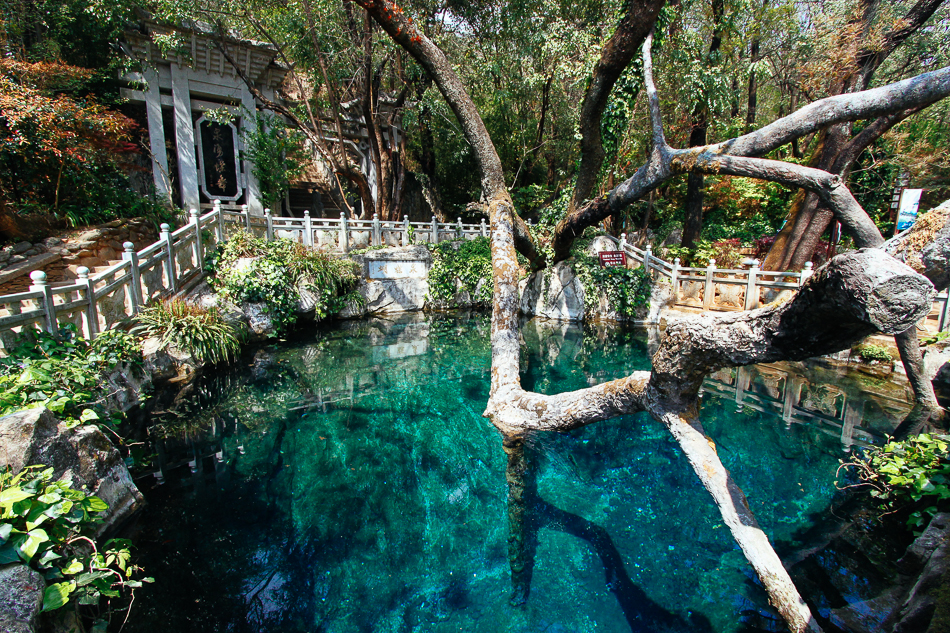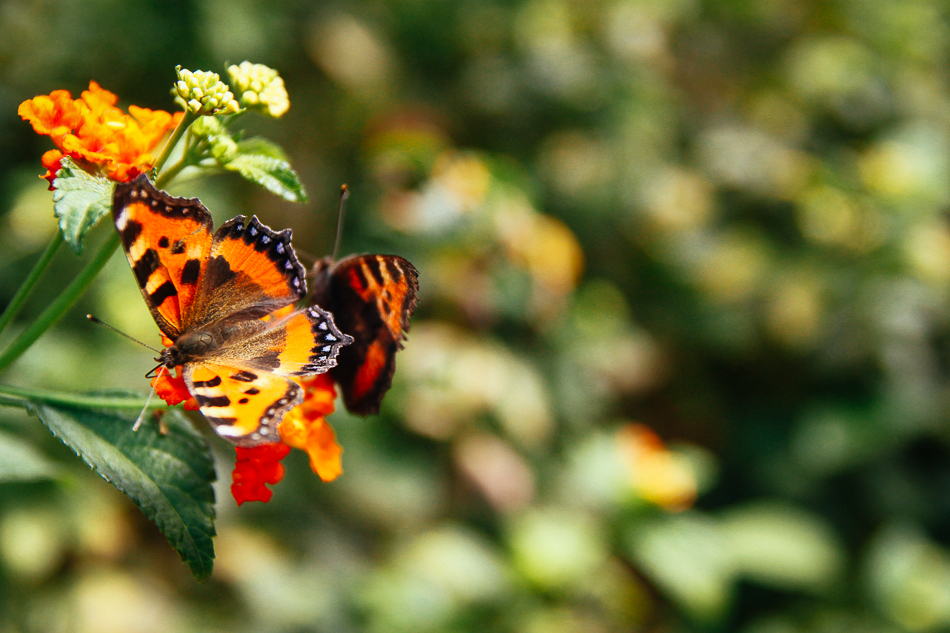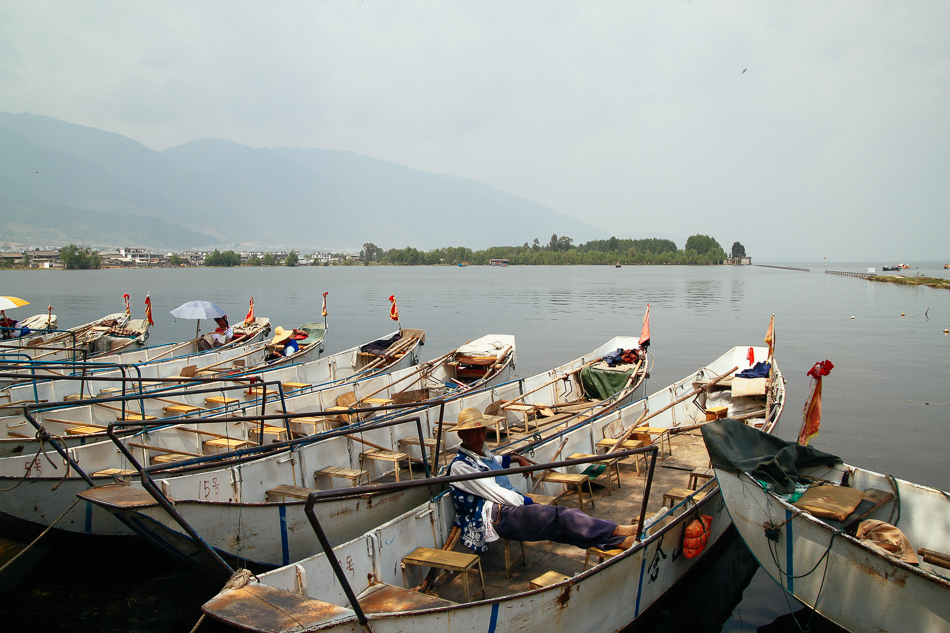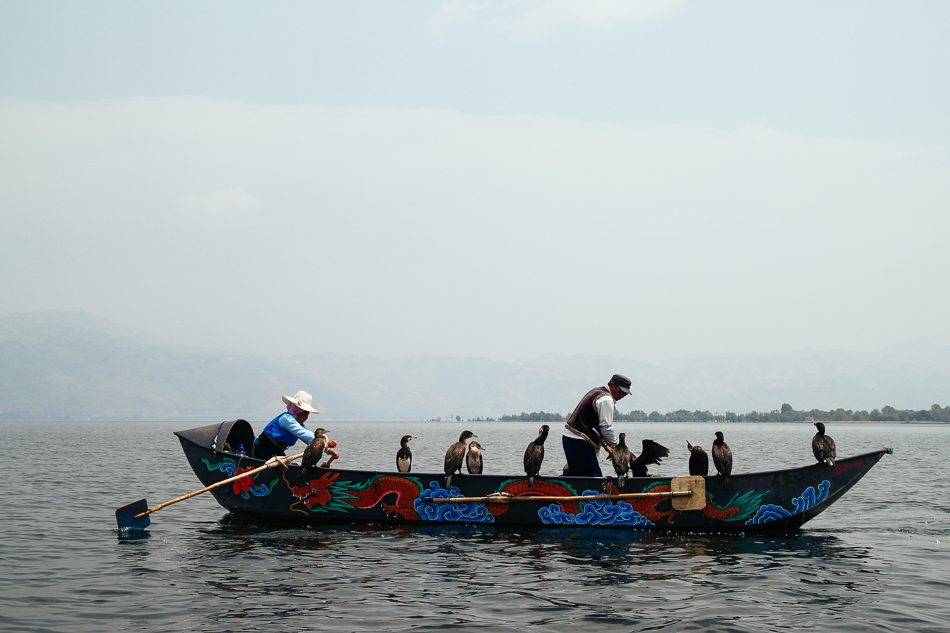Laman Seni 7 – Not Your Average #lorongbelakang
Posted on July 2, 2014 3 Comments
Taking a quick break from my China travelogue to blog about the new hipster hotspot in KL! 😛
Most KL-ites (or tourists, for that matter) will probably only be able to point out the eclectic riverside wall you can see from the Masjid Jamek LRT station if asked about street art in KL, or perhaps Bangsar, where graffiti pieces of varying complexity can be found sporadically amongst the Telawi streets.
Gotta say though, the art scene here has definitely seen a welcome boost ever since Ernest Zacharevic put Penang on the map with his quirky murals. I’m no art snob for sure – but everybody can appreciate a good bit of street art, so I was pretty excited to hear about Laman Seni 7 (Art Site 7), a new art site in the alleys of Shah Alam!
A collaboration between the Shah Alam City Council (MBSA), Bank Muamalat and UiTM students, Laman Seni 7 is the “sequel” to a similar art project last year, Laman Seni 2 (which I somehow totally missed). It’s part of the MBSA’s efforts to run a “clean zone programme”, and challenge the notion of back alleys as dirty, dingy areas by developing them into tourist attractions.
Laman Seni 7 is pretty easy to get to – just search for “Jalan Plumbum Q7” on your Waze or Google Maps, and it should take you right up to a relatively quiet (for now perhaps?) road lined with shops on both sides. The Laman Seni 7 alley is right behind the row of shops, and you should be able to spot any one of several entry points to the back alley without any problems.
To call it an “alley” would be a little unfair – this #lorongbelakang is actually pleasantly spacious!
There are quite a number of art pieces here, ranging from the whimsical to the cheeky, and to the contemplative, or just downright impressively intricate.
Toilets not actually included – go before you go.
Never occurred to me until I left that this Snakes & Ladders board might actually be functional – bring along a dice and let me know if it is! 😛
See what I mean by intricate? I’ve always had the greatest respect for artistic types – being able to create something out of nothing always seemed like just a step short of magic for me.
One of my favourite little touches is the piece on the left; if the sun’s in hiding or the lighting is even when you happen to see the piece, it’s just a pretty cluster of spores. But if you happen to visit when the light is just right, you won’t be able to miss the handprint to the bottom right of the spore cluster, which happens to be the artist’s signature 😀
As you’ve probably gathered by now, it’s a great place for your requisite “hey look where I am” photo ops, so most importantly: remember to bring some friends along for your silly photo quota!
Entrance to the art site is free and it’s open at all times (duh, it’s an alley), so do check it out soon! For more info, check out this writeup by Hype Malaysia. Can’t wait to see what the future holds for this art project 😀
Dawdling in Dali
Posted on June 12, 2014 4 Comments
After an uneventful first day in Kunming, and a decidedly underwhelming tour to the Shilin Stone Forest, I hopped on an overnight train to Dali, fervently hoping that my next destination wouldn’t disappoint.
Dali is typically stop no. 2 for anyone making their way along the “Yunnan tourist trail”, i.e. Kunming, Dali, Lijiang, and Shangri-La. It is often compared to Lijiang, and if you Google around, you’d probably find quite a few articles of the “Dali vs Lijiang” kind, debating the pros and cons of both cities. Dali is often described as the more laidback, quiet half of the two, while Lijiang is the city to go to if you can’t do without the constant buzz of people and nightlife – it really just comes down to personal preference.
Though at the end of it, I really couldn’t say which town I preferred, I knew that stopping at Dali was the right choice, when I started getting an antsy feeling in the pit of my stomach that meant I was ready to go right out and explore the moment I stepped out of the train station.
This was the China I came for 🙂
Like most ancient cities, Dali has a pretty robust city wall circling its perimeter – this is one of the oldest city gates!

(This is the most picturesque “smoking pavilion” I’ve ever seen in my life!)
Behind the city walls lie a perfectly charming city, which somehow doesn’t make modern elements like motorbikes and street lamps feel overly out of place 😛
Although Dali and Lijiang are rather similar in some ways, one of the interesting differences lies in the cities’ architecture – buildings in Dali are mostly built with stone and marble (marble is Dali shi, or literally “Stone of Dali” in Mandarin), while Lijiang buildings are built with wood!
As you take a leisurely stroll around the city, you won’t go far before you hear a perpetual clunking of metal hitting metal, thanks to the artisans crafting silver bangles and other jewellery on every other street corner…
… and also canals running throughout the city. This particular stretch, complete with a gently cascading waterfall, can be found at the “Yang Ren Jie” (Westerners’ Street), which transforms into a bustling row of bars and pubs by night.
Biking is a fairly common way to get around in Dali, so you’ll also find plenty of those in town. Some hostels also offer bike rental services as well, so you can always ask!
Most people only stop by Dali for a day or two (like me), which is a bit of a pity, because having been there, I think it deserves to be enjoyed with an unhurried, relaxed stay. But if one day’s all you got, there are a few more places you can visit/things you can do:
1. The Three Pagodas of ChongSheng Temple
Arguably Dali’s most iconic attraction, the Three Pagodas of ChongSheng Temple are a group of three pagoda towers forming the corners of an equilateral triangle, built in the 9th and 10th centuries. According to local legends, the pagodas were built to defend the city against dragons who inhabited Dali, which was once a swamp, before the humans arrived. They’re incredibly resilient too, having survived a couple of earthquakes which destroyed Dali unscathed.
The grounds surrounding the Pagodas and ChongSheng Temple are very nicely landscaped, which makes it a pleasant place to visit for an hour or two.
Don’t miss the bell tower right behind the Three Pagodas – go all the way to the top, and you’ll not only get to see the massive bronze bell, but also views of ChongSheng Temple against the CangShan mountains…
… and if you’re lucky, start off your morning with this stunning sight of sun rays piercing the clouds over Dali city!
Absolutely sublime 🙂
2. Butterfly Spring
The Butterfly Spring is… well, exactly what you might expect from its name. The main attraction itself is just a pool of crystal clear spring water where scores of butterflies used to congregate, but as with all major tourist destinations, there’s enough here to keep you gawking and your cameras snapping for at least an hour or so, like this gorgeous bamboo-lined pathway leading into the spring…
… and this beautiful pond a little ways from the spring, complete with hungry fat fish and all.
An ancient tree with huge, sprawling branches sits imposingly above the spring, and its fragrant blossoms are said to attract thousands of butterflies in the short interval when spring turns to summer, many of them connecting with each other, forming delicate chains of butterflies hanging from the branches down to the water’s surface. The beauty of the spring and its surroundings made it a popular place for the youth of the Bai minority who lived there in times past to perform traditional rituals of courtship – boy meets girl, boy sings to girl, and they vow everlasting love to each other under the branches of the “butterfly tree” (or something like that).
Sadly, there are almost no butterflies to be found now, and young men wooing the subjects of their affection have been replaced with eager tourists desperate to get their photos taken with a rock with the words “Butterfly Spring” engraved on it (a ROCK, and not even the actual spring itself, mind you). But even without the butterflies, you can’t not gasp when you lay your eyes on THIS:
One more time, just because it’s so unbelievably magnificent:
LOOK AT DEM WATER RIPPLES. LOOK. T_T I couldn’t make this up in Photoshop even if I tried.
If you feel like you can’t leave a place called “Butterfly Spring” without seeing any butterflies, fret not – there’s also a dedicated enclosure nearby where you can watch the elusive creatures flit around you to your heart’s content.
3. Cormorant Fishing on Erhai Lake
Erhai Lake (literally meaning “ear-shaped lake”) is to Dali what Mount Kinabalu is to Borneo, and there are quite a few things you can do at the vast, 250 square km lake – cycle around it, take a boat ride out to the micro-islands in the lake, or just lounge around by one of the piers.
My favourite, and what I think is the most unique thing to do there though, is to catch a cormorant fishing display!
Cormorants are goose-sized birds with black and white plumage, and fishermen have been using trained cormorants to fish in rivers since about 960 AD in Japan and China. Though it was once a booming industry, cormorant fishing today is mainly used for tourism purposes only – obviously, because can you imagine trying to keep up with the demands of a big city with just a few birds?
Hop on to one of the boats by the shore, and you’ll be ferried out…
… into waters so clear, you can see seaweed gently billowing as far as the eye can see 🙂
You’ll pull up a short distance from two fishermen in a boat, with cormorants obediently lined up by the sides, and this is where it gets interesting.
The fisherman picks up a cormorant, and – there’s really no other word for this – FLINGS the birds out to the water, one by one, and along with his partner, beats the water with their oars while hollering, “HEEYYY YO! HEEEYYY YO!” at the top of their lungs.
The cormorants then scramble around, hunting for fish. Trained cormorants typically have snares tied near the base of their throats to prevent them from swallowing larger fish, which are held in their throat. Their wings are also clipped to make sure that they can’t fly far.
You’ll know when a cormorant catches a fish, because you’ll hear a sudden burst of excited chatter from the fishermen. The cormorant trainer brings the bird back to the boat….
…and triumphantly hoists the bird up in the air, while it shows off its prey for us camera-wielding tourists snapping frantically away. He then releases the bird, and rewards the cormorant fleet with small pieces of fish…
… stirring up a frenzy of birds right by your boat. This goes on for a few more rounds until its time to head back, and if you’re lucky, they sometimes offer to let you take back the fish caught by the cormorants for an extra fee!
Dali is a wonderful place to spend a slow couple of days, and if you have the time, you could also check out Shuanglang, a town on the opposite side of Erhai Lake. I didn’t have the chance to go there myself, but many locals I met after I left Dali raved about the place, so if you do make it there… let me know how it is! 🙂
Next stop: Lijiang, the city that piqued my interest in the Yunnan province in the first place!
Shilin Stone Forest & the Legend of Ashima
Posted on May 16, 2014 1 Comment
If you have ever traveled to China before, the following post might sound familiar to you. And if you’ve never been there before… well, you’ve probably heard plenty about how fascinating yet frustrating traveling there can be. So to add to the pile – my experience with a day trip to the Shilin Stone Forest of Kunming, to kick off my maiden journey back to the motherland!
Visiting the Stone Forest was something I’d always wanted to cross off the bucket list, ever since I stumbled across articles like this and this while randomly stumbling around the Internet. However, it soon became apparent that putting the Stone Forest on my itinerary was the only thing I did right (for the Kunming part of the trip lah).
My first mistake was to go against my instincts, and book a tour to the Stone Forest from a tour agent I bumped into while trying to get a local SIM card; I usually only go for tours if there is no other way, or if it would be really difficult for me to get around otherwise, because I like taking my time to wander around and take a million photos of everything. The tour agent said it would be more convenient for me to be picked up and guided the whole way… I was tired, vulnerable, and besides, how bad could it be?
My first inkling that it might not be a day of joy, wonder and enlightenment ahead came when after about a 1-hour ride, the bus dropped us off at Tourist Moneysucker Central No. 1, a silverware shop where the sales assistants and my tour guide alike were insistent on showing us the best of silver jewellery, cutlery and sculptures (which happen to be one of Yunnan’s main exports).
But never mind. Thankfully, we got back onto the bus after 20 minutes, after which we arrived at the Yanquan Temple in the Yiliang county. I worriedly looked at my phone and noted that it was late morning, and we seemed to be nowhere near the Stone Forest yet.
The unique thing about Yanquan Temple is that Buddhist and Taoist influences coexist in the same temple, making it one of the Eight Famous Sights in Yiliang County (I have no idea what the other seven are). Unfortunately, photography is not allowed inside the temple, so I can’t show you a lot. The temple is not overwhelmingly breathtaking anyway – while it was pleasant enough, the most remarkable spot in the temple was just the “Nine-Dragons Wall” as pictured below, the third-largest of its kind in China.
And I wish I could’ve stopped there, but noooo. After a tour of the temple, we were ushered into a room where we individually took turns to “seek blessings” from the temple monks… who then proceeded to insist on a (large) donation in return for a prayer candle. Being the peace-loving, non-confrontational cat that I am, I ended up giving the monk about 20 RMB just to get out of there 😐 And then I came back to Malaysia, only to discover after a little poking around that the same temple was once closed down due to allegations of fake monks swindling tourists out of their money -.-
We finally arrived at Shilin Stone Forest at about 1 pm, upon which I was introduced to one of the hallmarks of Chinese tourism – electric “cars” ferrying tourists from one spot to another, because god forbid you have to walk any more than you absolutely have to. They come in variants of a minibus-like vehicle, or a sorta elongated golf buggy, like this, and can be found in most major tourist sites which involve a bit of walking. They’ll always cost you anywhere from 20-60 RMB extra on top of your entrance fee too, FYI. You didn’t expect any less, did you?
The Stone Forest is a massive park that covers about 400 square km, and is divided into several sections, like the Major Stone Forest, Minor Stone Forest and Naigu Stone Forest, all of which feature stones in various formations. Most of the park has been “touristified” with wide roads and meticulously landscaping, so it’s not exactly the untamed “forest” you might have been imagining, but it’s still a real treat to visit.
The story of how the Stone Forest was formed is one as old as time itself. Some 200 million years ago, an ancient seabed covered with limestone sediment rose to become land. Then, wind and rain slowly eroded the limestone, leaving behind the bizarre rock pillars today, some of which are nearly as tall as ten story buildings. Many of the rock formations are also said to resemble people, animals, plants and more, with a little bit of imagination, of course 😛
Go on and get lost, because getting dwarfed by the massive stone walls while navigating the winding pathways is pretty darn cool.
The Yi ethnic minority make up the majority of the population in this part of the Yunnan province, which is why you’ll see tribal dances performed at select locations, as well as costume rentals for photo opportunities basically everywhere throughout the park.
*The picture immediately below is where you can dress up and take a picture with the “Shilin” engraving in one of the formations (the first picture in this post), because how else would people know you’ve been to the Stone Forest?!
Remember the part about using your imagination with these rocks? There’s actually a legend associated with the most famous formation in the Shilin Stone Forest.
According to local folklore, there was once a beautiful maiden named Ashima, who was kidnapped by the son of an evil landlord, Azhi, and forced to marry him. The man she loved, Ahei, went to save her with his magic bows and arrows.
Ahei and Azhi competed against each other by singing for 3 days and 3 nights, and Ahei finally won by outlasting his opponent. On the way home, however, Ashima was caught in a flood and turned into what is known today as the “Ashima Rock”. The rock is said to be resemble Ashima in her traditional Yi garb and headgear, looking into the distance, with a basket on her back. Can you spot the rock? 😉
I wish I could say that that was the end to an awesome Stone Forest day trip, but all I got was a reinforcement of my conviction to not be part of group tours.
I was really looking forward to getting sweeping views of a dense “forest” like this and this, which I think would have been in the Major Stone Forest area, but we zipped past glimpses of said forests on the way to the more touristy Minor Stone Forest, where I took many of the photos above. And I thought maybe we’d get to see it after that, but after just 2 hours in the Stone Forest (which again, covers over 400 square km), we were schlepped back onto the bus… where we were transported to Tourist Moneysucker Central No. 2 – Qicai Yunnan, which was literally a complex of small malls selling everything from silverware to tea to random trinkets. The time we were allocated to part with our money there? TWO HOURS. (╯°□°)╯︵ ┻━┻
Sigh. To be clear, I absolutely recommend visiting the Stone Forest if you’re ever in Kunming – just do it yourself. The tickets are quite pricey – 175 RMB each, plus another 25 RMB for access to the electric cars (they might actually be useful for people who DO take the time to explore more of the park themselves). I don’t think it would be overly hard to go there yourself either, as I’ve read that you can take a bus from one of the Kunming bus stations to get there… which I’d have known if I had more time to do my research properly.
It looked like my China adventures were off to a shaky start, but luckily, things started to look up once I left the city for the countryside. Next up, Dali!
The beautiful, bizarre Nong Nooch Tropical Gardens
Posted on March 18, 2014 3 Comments
If Thailand’s city of sin isn’t quite the thing for you, don’t be in a hurry to leave just yet, because there might be something nearby that is!
About a half-hour drive away from Pattaya beach is the Nong Nooch Tropical Gardens, which is one of the biggest botanical gardens in Southeast Asia. Nong Nooch is actually a private garden that was meant to be a fruit plantation when the land was first purchased in 1954, but the owner, Mrs. Nongnooch Tansacha became inspired by other botanical gardens after traveling the world, and decided to have one of her own on her newly-purchased land instead. The Nong Nooch Gardens opened to the public in 1980, and has now become a popular tourist attraction managed by Mrs. Tansacha’s son, Mr. Kampon Tansacha.
It’s pretty easy to get to Nong Nooch – you can either hop on a song theaw (a van ferrying a whole bunch of people around), or follow the path of least resistance and join one of the tours that every other shop along the Pattaya beachfront will offer. I chose a half-day tour + transportation package for 700 baht, which wasn’t too bad because entrance to the gardens itself already costs 600 baht.
Nong Nooch is a HUUUUUUUGE garden with different themed gardens inside, and this nifty walkway will take you through most of the highlights. If you’re big on botany and nature, you could easily spend a whole day wandering around the gardens – I think with the half day tour, I only saw about half the things that were inside the park!
So yes. Nong Nooch is a really, really beautiful place… albeit slightly baffling. But you’re in Thailand, so really, you shouldn’t expect anything less of the Thais 😉
Why baffling, you ask? Well, one of the first things you’ll see if you follow the skywalk is…
… this Ant Tower, because… uhh… because I don’t know, but look! Giant ants!
Follow the skywalk further, and you’ll come to…
… a car showroom, where Mr. Tansacha proudly displays all the weird and wonderful cars he owns! Besides the muscle cars in the picture above, there are some less orthodox vehicles, like these…
Because you KNOW a guy like him has to find a way to spend all that cash he must be literally rolling around in every day 😛
Adding to the list of things that will make you go “…but why?” are the random herds of animals you’ll notice scattered throughout the park;
Because last I checked, penguins were definitely not fans of the tropics 😛
But all weirdness will (almost) be forgotten when you arrive at the crown jewel of Nong Nooch:
The gorgeoussss French Garden! This is the image of Nong Nooch that you’ll be seeing all over the tour brochures in Pattaya 😛
Not sure what Thai-style pagodas are doing in a French garden, but they sure are pretty!
And right next to the French garden is another eccentricity – a recreation of Stonehenge!
Yeahh, can’t tell you why it’s there either.
Some of the other themed gardens I managed to see there included;
The Jurassic Park-ish Cycad Garden, apparently the largest collection of cycads in the world;
The Rock Garden, because every garden needs some neatly arranged spherical boulders;
The Heart Garden (no prizes for guessing why);
The Bonsai Garden (miniature old trees FTW!);
The Topiary Garden, which was right next to another one of my favourite places in Nong Nooch…
… the European Garden! (Not to be confused with the French Garden, because French gardens clearly aren’t European gardens…. :P)
A little further away from the European Gardens, you’ll also find the Cactus Garden;
I was wondering if I was looking at a new species of cacti until I noticed these 2 ladies hand-painting the needles!
Another one of the gardens I loved in Nong Nooch was the Floating Oasis, a cluster of neatly manicured shrubbery on pontoons, out on a lake!
You can paddle around the lake in one of these boats if you want;
Or you could take your turn at contributing to the waistlines of the giant arapaima fish in the lake!
The last “garden” that you’ll come to (if you take the half-day tour) is Butterfly Hill, which is right next to Nong Nooch’s visitor centre.
Here, you can find a couple of restaurants, rest rooms and souvenir shops, as well as the stages for a Thai cultural show and an elephant show that run about 4 times a day. The tickets for your shows will most likely already have been included in your Nong Nooch, but I skipped the Thai cultural show to explore more of the garden as I’d already seen plenty of those during my previous Thailand trips anyway.
Baby elephants are ❤
Nong Nooch turned out to be one of my Pattaya favourites despite the slightly steep prices, and if you’re weird like me, it might be for you too 😉 Do check it out if you’re looking for somewhere chill to get lost and take loads of pictures – you can even stay there if you want to!



